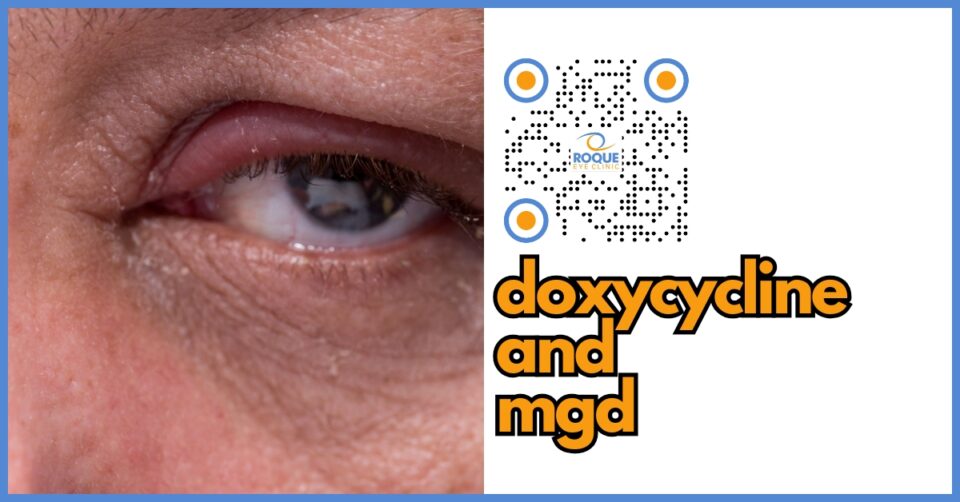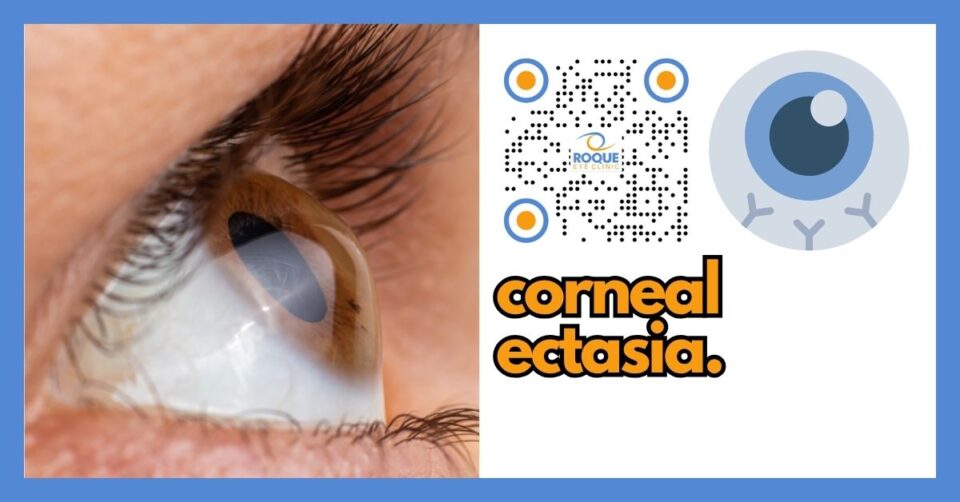ANIMATION
Key Learning Points
- Understanding Meibomian Gland Dysfunction (MGD): MGD is a common eye condition that affects the oil-producing glands in the eyelids, leading to dry eyes and irritation.
- Symptoms of MGD: Symptoms include dryness, redness, a gritty feeling, and blurry vision. It can significantly impact daily life and comfort.
- Role of Doxycycline in MGD Treatment: Doxycycline, an antibiotic, is used not only for its antibacterial properties but also for its anti-inflammatory effects, which help manage MGD.
- Prevention Tips: Regular eye hygiene, warm compresses, and lid massages can help prevent or manage MGD.
- Importance of Regular Eye Check-ups: Regular consultations with an ophthalmologist are essential to manage MGD and adjust treatment plans.
Understanding Doxycycline and Meibomian Gland Dysfunction (MGD)
What is Meibomian Gland Dysfunction?
Meibomian Gland Dysfunction (MGD) is a condition in which the meibomian glands in the eyelids do not secrete enough oil or poor-quality oil, leading to a lack of proper lubrication in the eyes. The meibomian glands are tiny oil glands located along the edge of the eyelids. They play a crucial role in maintaining a healthy tear film by secreting oils that prevent the tears from evaporating too quickly.
Imagine the meibomian glands as tiny oil dispensers that need to work smoothly to keep your eyes comfortable, like oil is essential to keep an engine running smoothly. When these dispensers get clogged or stop working well, it’s like the engine running without oil—things start to break down, leading to discomfort, dryness, and irritation. Managing MGD is like ensuring these oil dispensers stay unclogged and functioning, which keeps your “engine” running smoothly and your eyes comfortable.
Symptoms of Meibomian Gland Dysfunction
MGD can cause various uncomfortable symptoms, including:
- Dryness and Irritation: Patients often experience dry, itchy, or burning eyes.
- Blurry Vision: The instability of the tear film can cause intermittent blurriness.
- Sensitivity to Light: Many individuals report increased sensitivity to light, known as photophobia.
- Redness and Swelling: Chronic inflammation can lead to redness and swelling around the eyes.
- Gritty or Sandy Feeling: A sensation that something is in the eye, often described as grittiness.
Causes and Risk Factors
MGD can be caused by various factors, including:
- Aging: Gland function often decreases with age.
- Hormonal Changes: Hormonal imbalances, particularly in women, can affect gland function.
- Chronic Inflammation: Conditions like rosacea can increase the risk of MGD.
- Contact Lens Wear: Long-term contact lens use can disrupt the glands.
- Poor Lid Hygiene: Lack of proper eyelid hygiene can lead to gland blockages.
Diagnosis of MGD
Diagnosis of MGD typically involves a thorough eye examination by an ophthalmologist. The evaluation may include:
- Slit-lamp Examination: This allows the doctor to observe the eyelid margins and meibomian glands closely.
- Meibography: An imaging technique that visualizes the glands within the eyelids.
- Tear Break-up Time Test: Measures how quickly tears evaporate, indicating the quality of the tear film.
Treatment Options for MGD
Treating MGD aims to improve the function of the meibomian glands and relieve symptoms. Common treatments include:
1. Warm Compresses and Lid Hygiene
Applying warm compresses to the eyelids can help loosen clogged oils in the glands. This should be followed by gentle lid massage and cleansing with a lid scrub or baby shampoo.
2. Artificial Tears
Over-the-counter artificial tears can help keep the eyes lubricated. Opt for preservative-free options to avoid further irritation.
3. Omega-3 Supplements
Studies suggest that omega-3 fatty acids may improve the quality of gland secretions. Fish oil supplements or a diet rich in omega-3s can be beneficial.
4. Doxycycline
Doxycycline, an antibiotic, is often prescribed for MGD. It works by reducing inflammation and altering the composition of gland secretions. Doxycycline can be used in low doses for long-term management, minimizing side effects while providing significant relief.
5. Thermal Pulsation Devices
These devices in the clinic apply heat and pressure to the eyelids to unblock glands. One such device is the LipiFlow system, which can significantly improve gland function.
6. Intense Pulsed Light (IPL) Therapy
IPL therapy uses light pulses to reduce inflammation and improve gland function. It's a newer treatment option that has shown promise in managing MGD.
Preventing Meibomian Gland Dysfunction
While MGD cannot always be prevented, several steps can help reduce the risk:
- Maintain Good Lid Hygiene: Regularly clean the eyelid margins to prevent blockages.
- Use Warm Compresses: Incorporate warm compresses into your daily routine to keep the glands functioning well.
- Limit Screen Time: Prolonged screen use can reduce blinking and worsen symptoms. Take regular breaks to rest your eyes.
- Stay Hydrated: Proper hydration can help maintain a healthy tear film.
- Diet and Supplements: Incorporate omega-3-rich foods or supplements to support gland health.
Post-Treatment Care
After treatment for MGD, it’s important to continue with maintenance care to prevent recurrence:
- Continue Warm Compresses and Lid Hygiene: Even after symptoms improve, maintaining these habits can prevent future blockages.
- Follow Up with Your Ophthalmologist: Regular check-ups are essential to monitor gland function and adjust treatments if necessary.
- Adhere to Medication Guidelines: If prescribed doxycycline or other medications, take them as directed and complete the entire course.
- Monitor for Changes: Monitor symptoms and promptly report any changes or worsening to your doctor.
Frequently Asked Questions
-
What is Meibomian Gland Dysfunction (MGD)?
- MGD is a condition in which the oil glands in the eyelids become clogged or dysfunctional, leading to dry eyes and irritation.
-
How does doxycycline help with MGD?
- Doxycycline reduces inflammation and improves the quality of oil produced by the glands, helping to relieve symptoms.
-
Are there any side effects of taking doxycycline for MGD?
- Side effects are generally mild and can include stomach upset or sun sensitivity. To minimize risks, it’s important to follow your doctor’s instructions.
-
Can MGD be cured completely?
- MGD is a chronic condition, but symptoms can be managed effectively with ongoing treatment and good eyelid hygiene.
-
How often should I use warm compresses for MGD?
- Ideally, warm compresses should be used once or twice daily, as your ophthalmologist recommends.
-
Is MGD related to age?
- Yes, MGD is more common with age as gland function declines over time.
-
Can diet affect my MGD symptoms?
- A diet rich in omega-3 fatty acids can improve gland function and reduce symptoms of MGD.
-
Can contact lenses worsen MGD?
- Yes, long-term use of contact lenses can affect gland function and exacerbate symptoms.
-
Should I avoid makeup if I have MGD?
- To avoid worsening MGD, it’s advisable to use hypoallergenic, non-clogging makeup and thoroughly clean the eyelid margins.
-
When should I see a doctor for MGD?
- If you experience persistent dry eye symptoms, redness, or irritation, it’s important to consult an ophthalmologist for proper diagnosis and treatment.
Take-Home Message
Meibomian Gland Dysfunction is a common cause of dry eye that can significantly affect quality of life. By understanding the role of the meibomian glands and the importance of proper eyelid hygiene, you can take steps to manage and prevent symptoms. Treatments like doxycycline offer effective relief by targeting inflammation and improving gland function. Regular follow-ups with your ophthalmologist and adherence to prescribed treatments are key to keeping your eyes comfortable and healthy.
Bibliography
-
Geerling G, Tauber J, Baudouin C, et al. The International Workshop on Meibomian Gland Dysfunction: report of the subcommittee on management and treatment of Meibomian Gland Dysfunction. Invest Ophthalmol Vis Sci. 2011;52(4):2050-2064. doi:10.1167/iovs.10-6997g.
-
Liu Y, Kam WR, Sullivan DA. Influence of omega-3 and omega-6 fatty acids on human Meibomian gland epithelial cells. Cornea. 2020;39(6):774-780. doi:10.1097/ICO.0000000000002264.
-
Yang NY, Koh MJA, Khor WB, Tong L. Treatment of Meibomian gland dysfunction by intense pulsed light with optimal pulse technology in skin types 3 and 4. Cornea. 2020;39(6):761-765. doi:10.1097/ICO.0000000000002288.
-
Korb DR, Blackie CA, Meadows DL, Christensen M, Douglass T, Kenyon KR. Evaluation of gland function and symptoms in patients with and without ocular discomfort. Invest Ophthalmol Vis Sci. 2011;52(10):6136-6141. doi:10.1167/iovs.11-8267.
-
Arita R, Mizoguchi T, Kawashima M, Fukuoka S, Koh S, Shirakawa R. Meibomian gland dysfunction and dry eye are similar but different based on a population-based study in Japan: the Hirado-Takushima study. Eye Contact Lens. 2020;46(5):280-286. doi:10.1097/ICL.0000000000000671.
BOOK AN APPOINTMENT
It takes less than 5 minutes to complete your online booking. Alternatively, you may call our BGC Clinic, or our Alabang Clinic for assistance.






